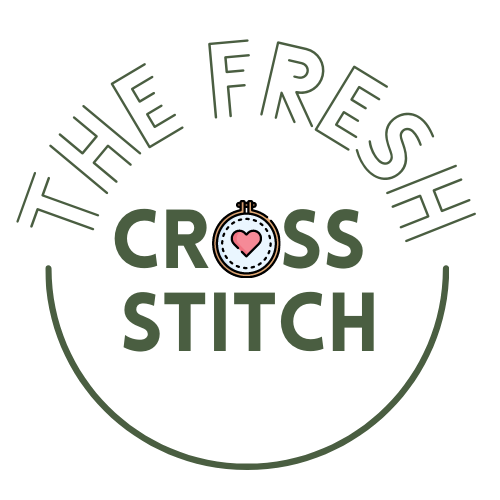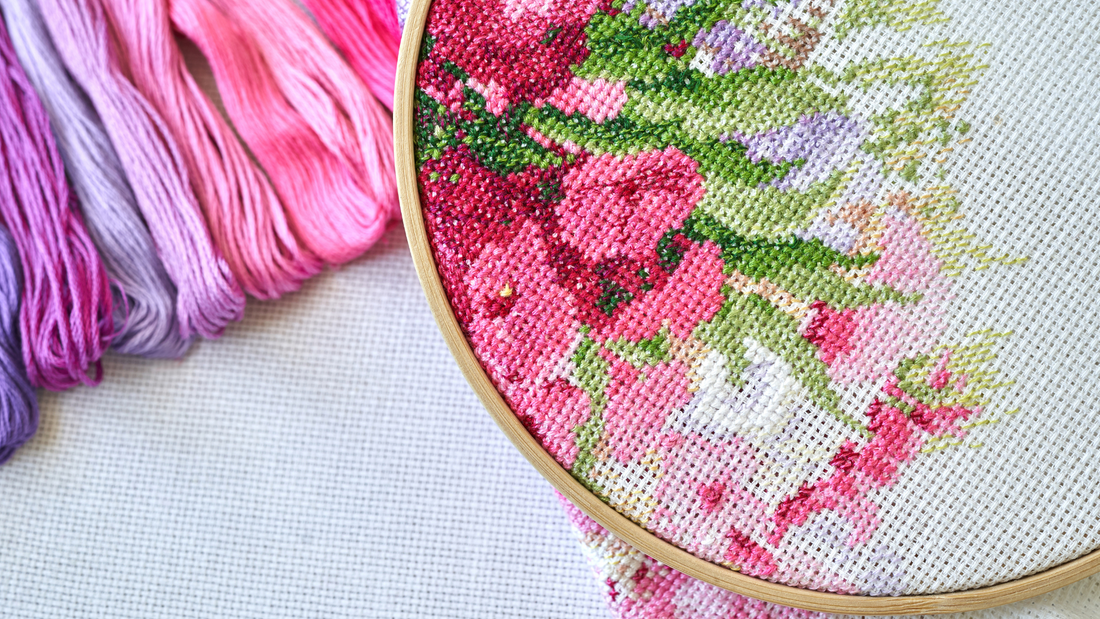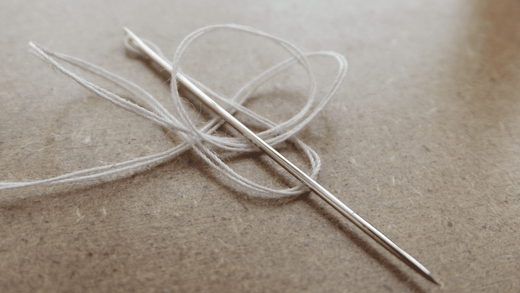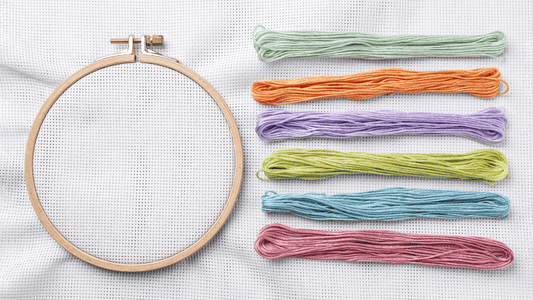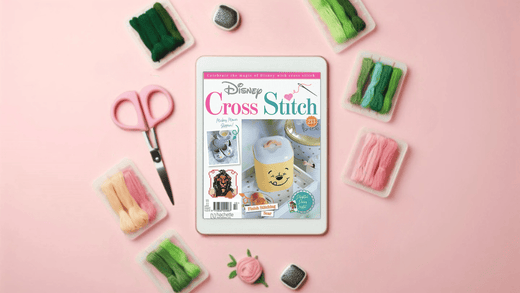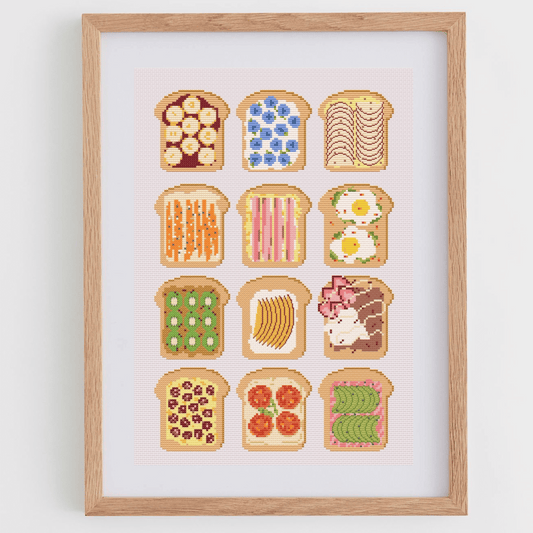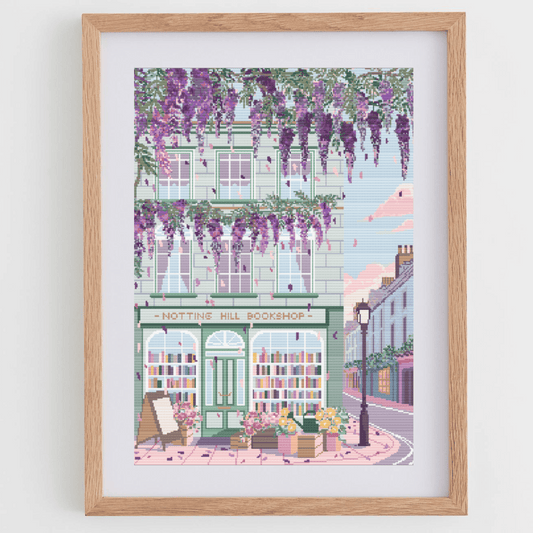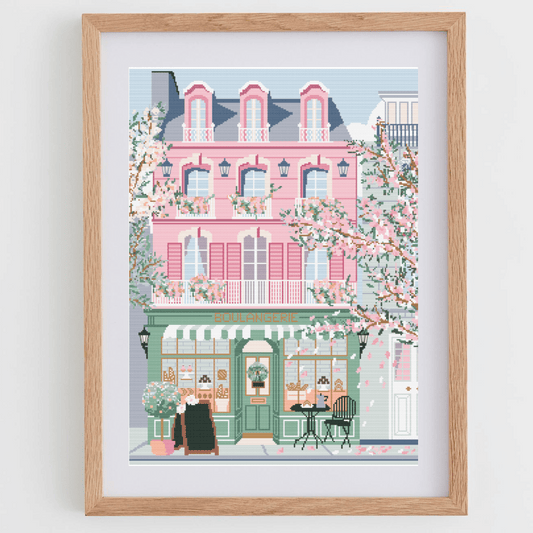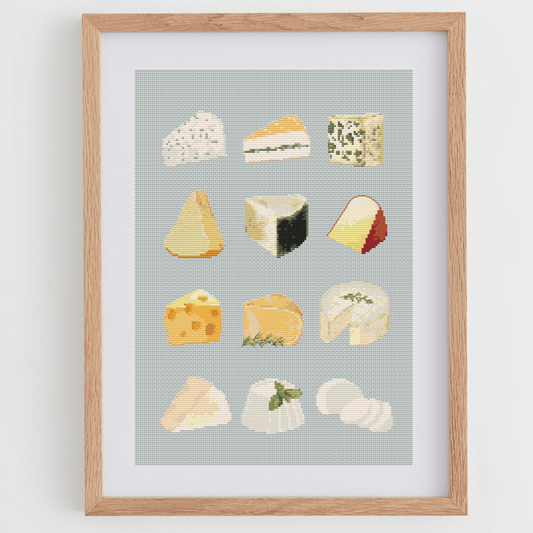Cross stitch is a rewarding hobby that is not only enjoyable but also easy to learn. If you're just starting out, I want to offer you some cross stitch tips and advice to ensure the best possible beginning. Here are my top cross stitch tips for beginners!
Use an embroidery hoop
An embroidery hoop is a double wooden ring used to stretch the fabric. With this tool, the fabric remains taut and firm, making it effortless to find the holes in the grid and pass the needle through them.
While using an embroidery hoop is a matter of personal preference, we recommend trying it if you're new to cross stitch.
Begin with easy and free patterns
Over time, you'll be able to create your own designs, but starting with simple cross stitch patterns is best for beginners. At The Fresh Cross Stitch, you can find charts for all skills levels, including free cross stitch charts. Choose patterns with few stitches and limited colors, so you won't get overwhelmed with changing threads and can finish your project quickly.
If you're unsure about cross stitch charts, don't worry! It's quite easy, and you can check this step-by-step guide on how to read a cross stitch pattern to keep you on track.
Support your work on a surface
Working on a surface provides greater stability, helping you find the stitches more quickly and avoid straining your back. You can use any surface, whether it's a table or your own knees! With time, you'll find your most comfortable position, but it's advisable to work on a supported surface when you're starting out.
Illuminate your work area
Working on your projects with good lighting makes everything much easier. Though it may seem obvious, it's easy to overlook, especially when embroidering at night. Proper lighting will allow you to see the stitches better, enabling you to progress faster and, most importantly, without straining your eyes.
If you want to go one step further, you can also look for the best magnifying lamp for cross stitch and get a much better and more comfortable view!
Start with a larger count
Cross stitch fabrics come in various types, all featuring a grid pattern that allows you to create the characteristic X-shaped stitches. However, the size of the fabric's grid is crucial for beginners. The larger the square you have to fill with that X, the easier your work will be. Fabrics are often named according to the number of stitches per inch (2.5 cm). Some commonly used fabrics are 14 or 16 stitches per inch, but you can also find larger ones, like 18 or 20 stitches. Keep in mind that the larger the grid, the bigger the final design will be.
Use an embroidery needle
Not all needles are the same. We recommend using an embroidery needle for cross stitch. What's the difference? Embroidery needles have a slightly rounded tip because they don't need to pierce the fabric, which already has pre-distributed holes in a grid pattern. In contrast, sewing needles have sharper points. While you can still use sewing needles, you may find that they catch on the edges of the holes, while embroidery needles make the job a breeze.
Choose quality threads
Threads are a fundamental part of embroidery, which is why using high-quality ones is recommended. Among the many brands available, DMC and Anchor stand out. Choosing the best cross stitch thread between DMC or Anchor is a matter of personal preference, as both are excellent brands with bright colors and smooth textures that glide easily.
The standard is for cross stitch patterns to reference DMC color codes. However, if you prefer to use Anchor threads, you can consult our conversion chart from Anchor to DMC.
Show off your art!
The most satisfying part of finishing a cross stitch project is being able to share it proudly with others. Display your work as decoration in your home or share your art on social media. I'd love to see your progress and completed pieces, so don't hesitate to tag @thefreshcrossstitch and share with our community.
